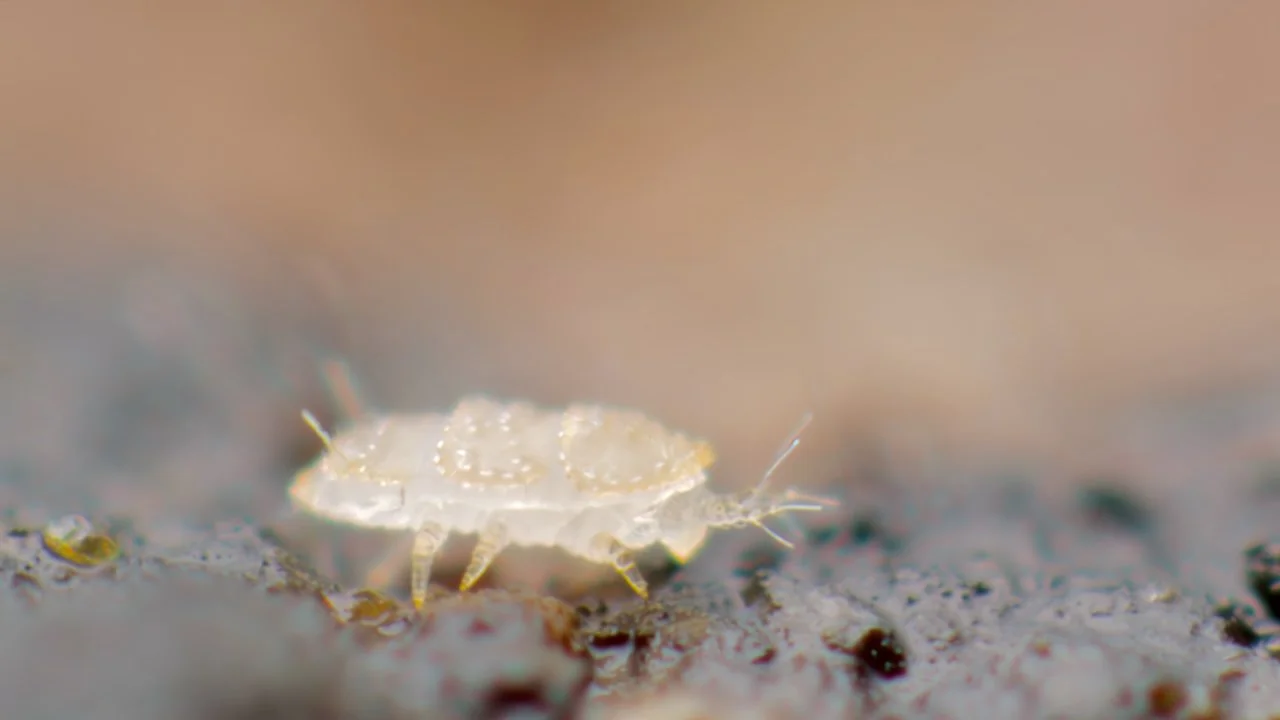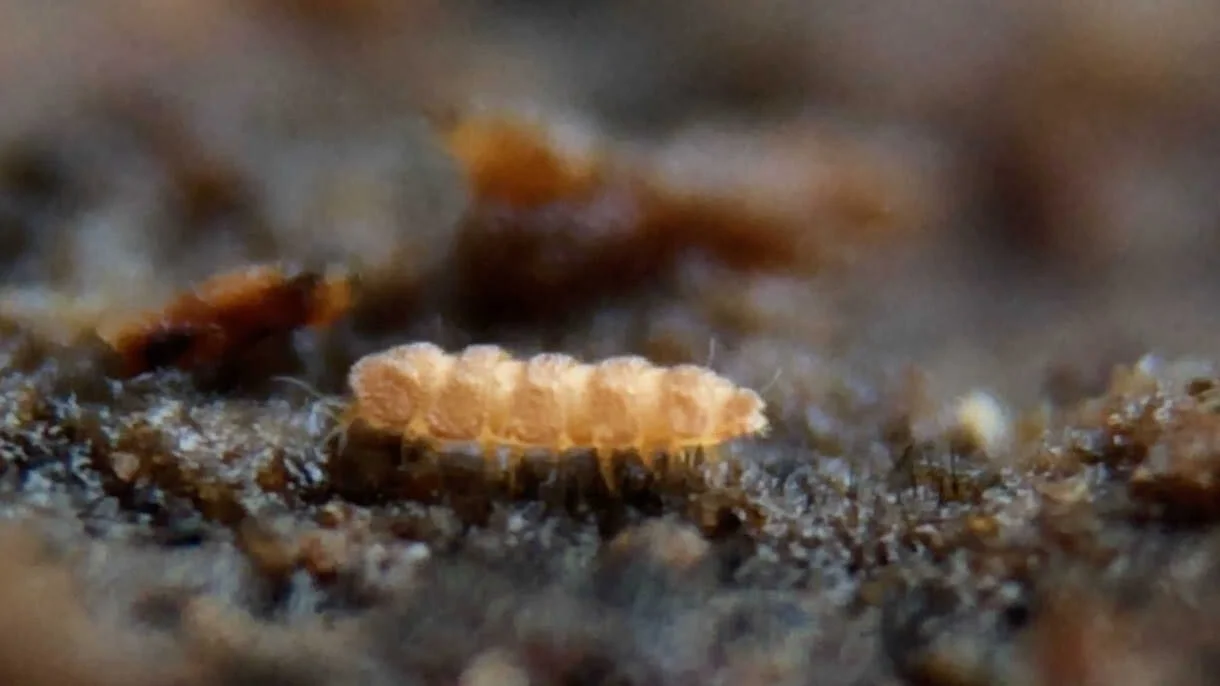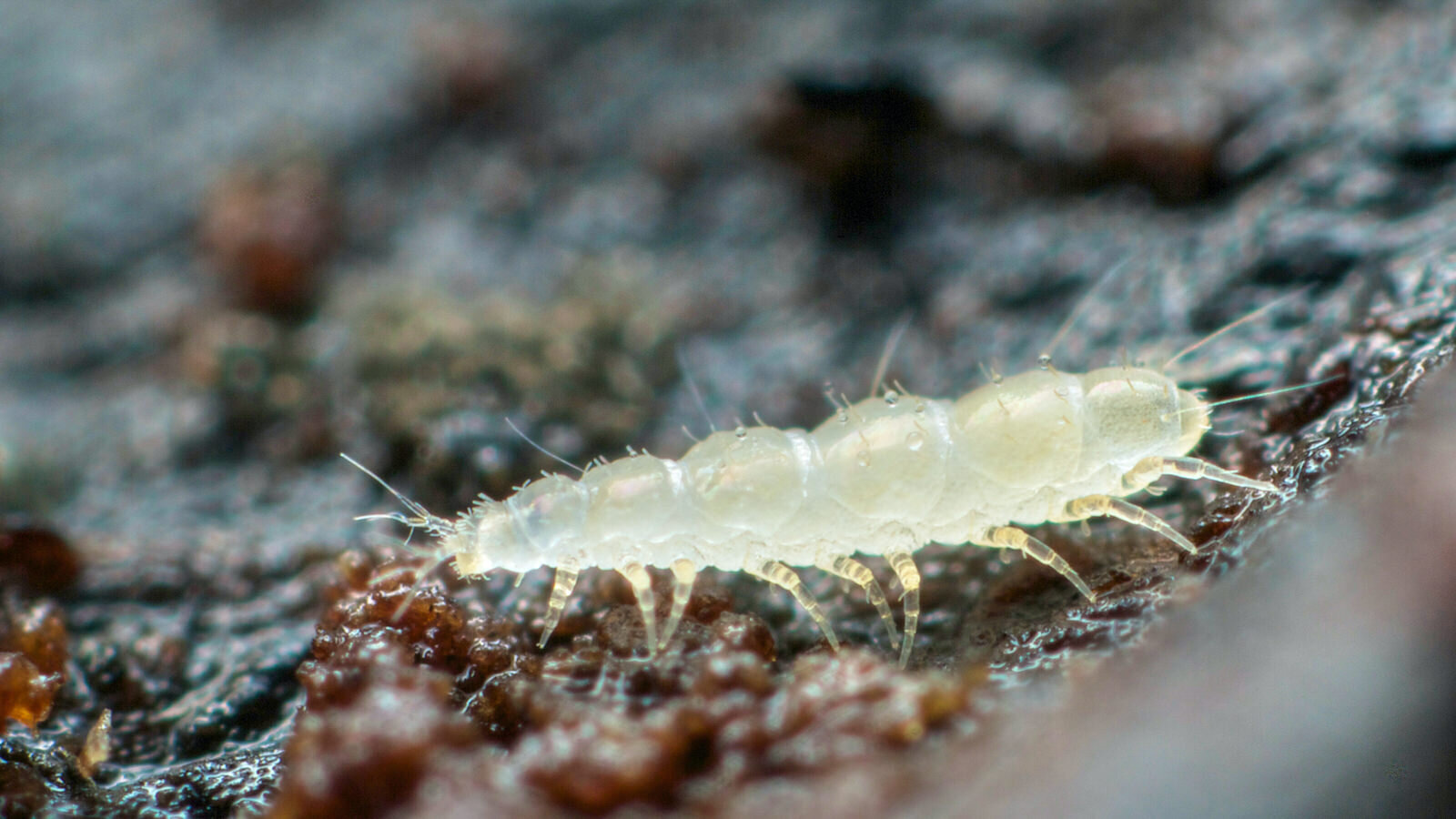
All about pauropods
Pauropods are members of Pauropoda, a class of tiny, usually colourless, millipede-like myriapods that live in humic soils around the world. They are only around 1.5mm big and are unique for their bifurcated antennae. They are, at the moment anyway, a member of the subphylum Miriapoda, along with symphylans, centipedes and millipedes. This is liable to change as newer groupings have been being suggested thanks to recent DNA sequencing, as well as a better understanding of the four classes.
Class Pauropoda splits into two orders- the Hexamerocerata and the larger order of Tetramerocerata. The former has only one family with a mainly tropical range while the latter has around twelve families. Sadly, I’ve yet to photograph any of the Hexamerocerata, and what an order they are. Much larger, more legs, longer antennae… They sound amazing.
Tetramerocerata can be split into two rough pauropod shape types. The cigar-shaped whitish pauropods and the more heavily sclerotised, flattened, yellow/brown-coloured eurypauropods.
As I am a photographer rather than a taxonomist, I know nothing about differentiating between any of the pauropod families. Pauropods are notoriously difficult animals to identify without a microscope and have very few taxonomists working on them. So on this page, I’ve had to call most of them ‘pauropod’. Any IDs on this page have come from communication from Dr Grant Wang, to whom I am hugely indebted. Many years ago, I was in contact with Dr Ulf Scheller, one of the foremost experts in the very tiny field of pauropod taxonomy, who sadly died at the age of 95 in 2021. He is sadly missed. I’m so glad that others are applying their expertise to such a wonderful class of animals.
For a pale, plain and extremely tiny soil arthropod, pauropods are remarkably sweet, fun to watch and rather lovely. They have an unusual gait, more of a funny, joyful scamper than a walk. For something so small, only collembolans have the ability to elicit the same happy feelings from me when I watch them. I can only compare the feeling to watching a spaniel puppy, waiting to be thrown a stick.
John Lubbock, who first described and named them, talked about one pauropod he had named as “a bustling, active, neat, and cleanly little creature. It has, too, a look of cheerful intelligence, which forms a great contrast to the dull stupidity of the Diplopods, or the melancholy ferocity of most Chilopods”.
Even being so small, the way pauropods move is so distinctive, that without a hand lens, they can easily be picked out in a line up from similar sized millipedes. They run for a couple of seconds before stopping dead. Then after a quick, inquisitive twirl of their antennae, they run off in another direction. They're usually under 2mm, although one tropical family can get up to 5mm. They all have branched or bifurcated antennae, a defining characteristic for all the group.
They're sightless and don't have a heart.
A NZ pauropod showing off its amazing bifurcated antennae
First instar and adult of a NZ pauropod, Tairua Feb 2014
first instar of NZ pauropod Tairua Feb 2014
When freshly hatched, baby pauropods have three sets of legs, increasing up to eight, nine, ten or eleven sets depending on genus. Most of the literature talks about them looking initially like centipedes which seems bizarre, if you've ever seen a centipede. Apart from having quite a few legs and often being sausage shaped, pauropods seem very different.
They are a member of the Myriapoda, and presumed to be a sister group to the millipedes, although even this is disputed. They certainly share some common attributes, but their differences are also large.
In 1873, John A Ryder, an American naturalist, described the difficulties even initially trying to fit the Pauropoda into a one single group.
'In the form of the body and legs the creature recalls the large carnivorous myriapods or centipedes, whilst in the possession of a pulvillus or pad, and a claw on the feet, they resemble in a measure true insects; in their branched antenna they resemble crustaceans and in their herbivorous habitats they resemble the herbivorous, and in the distribution of the legs they combine characters of both the herbivorous and the carnivorous myriapods.'
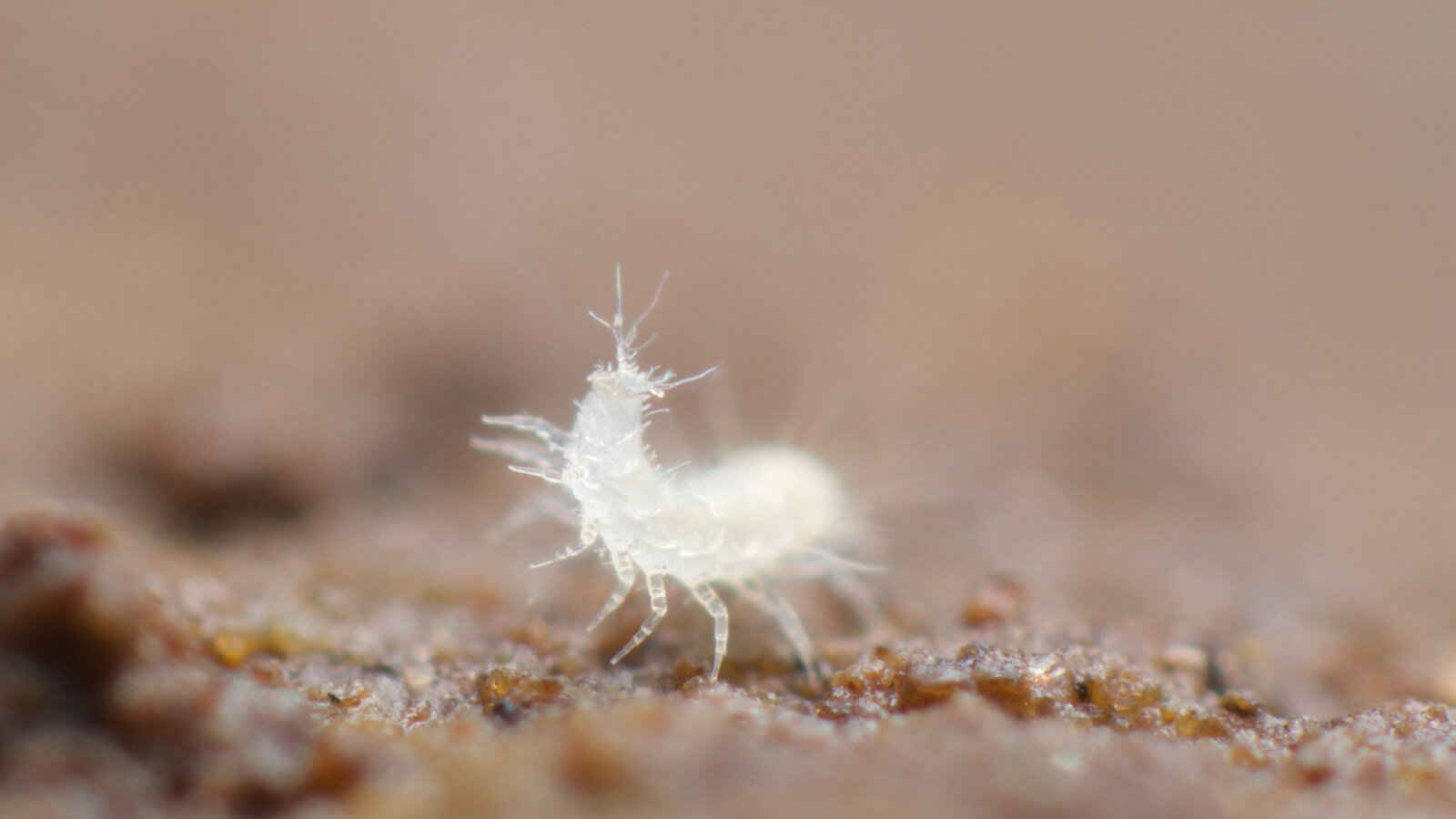
Preening pauropods
Pauropod, Compton Dundon, UK
There's no other word for it. Pauropods preen. The antennae or legs are lifted out of the way before they start to delicately groom themselves. Out of all soil mesofauna, only Collembola seem to pay a similar attention to grooming themselves, achieved with their eversible vesicles rather than their mouthparts.

Preening is a worldwide pastime. The pauropod above is from New Zealand. Below are pauropods from Germany, Mexico, the UK and Slovenia. It's a very popular pastime for pauropods.
Preening pauropod from near Weinheim, Southern Germany
And a Pauropod from Mexico City, Mexico, on rotting cactus trunk.
Preening pauropod Ebor gorge, Somerset, Feb 26th 2019
Pauropod in cave, Slovenia April 17th 2017
Above is a short video, taken on my phone. It shows the erratic movements of a typical pauropod quite nicely.
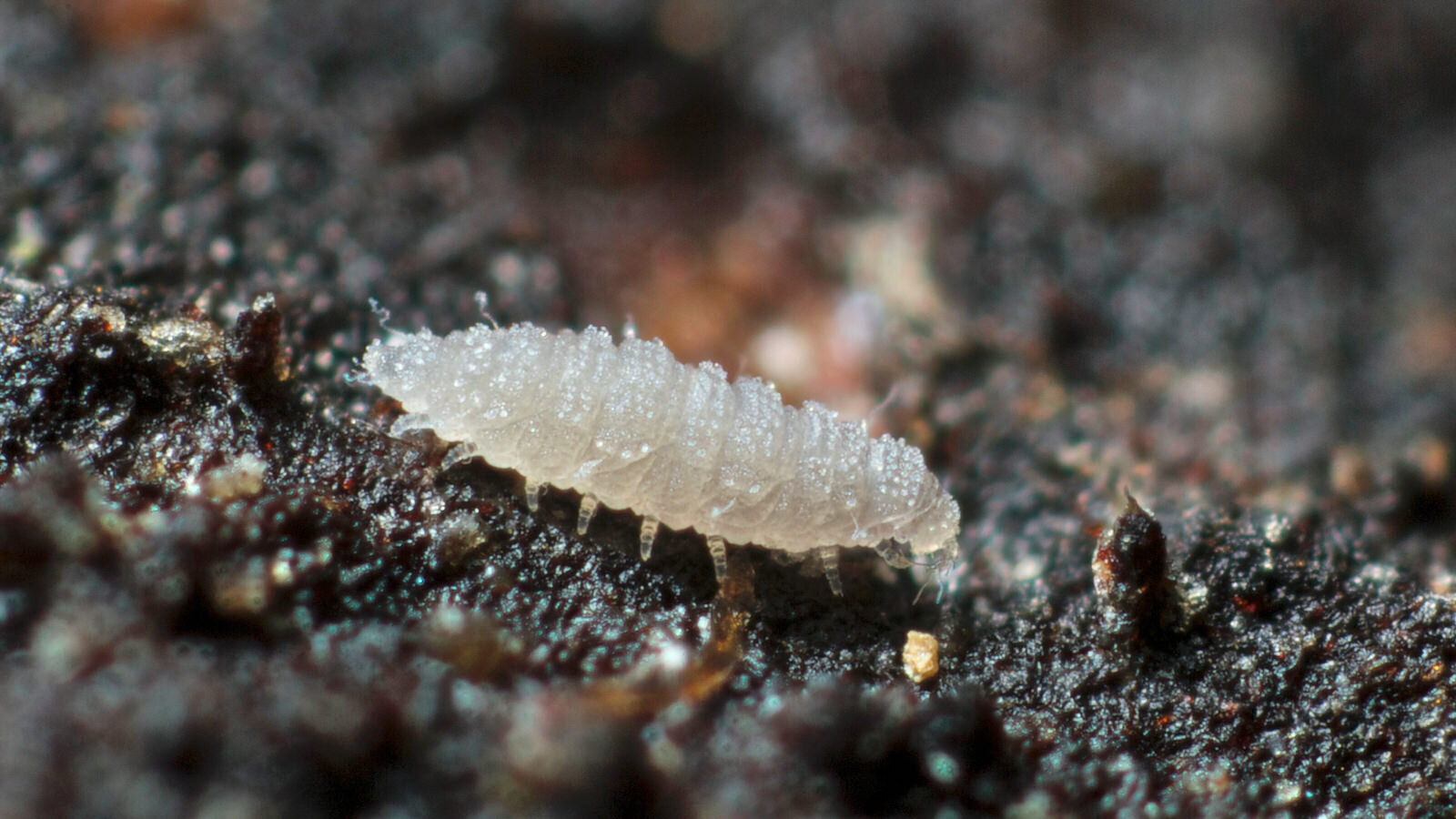
Brachypauropoides species of pauropod, Stewart Island, New Zealand.
Above is a member of a sclerotised Pauropoda from Stewart Island, New Zealand, probably a Brachypauropoides species.
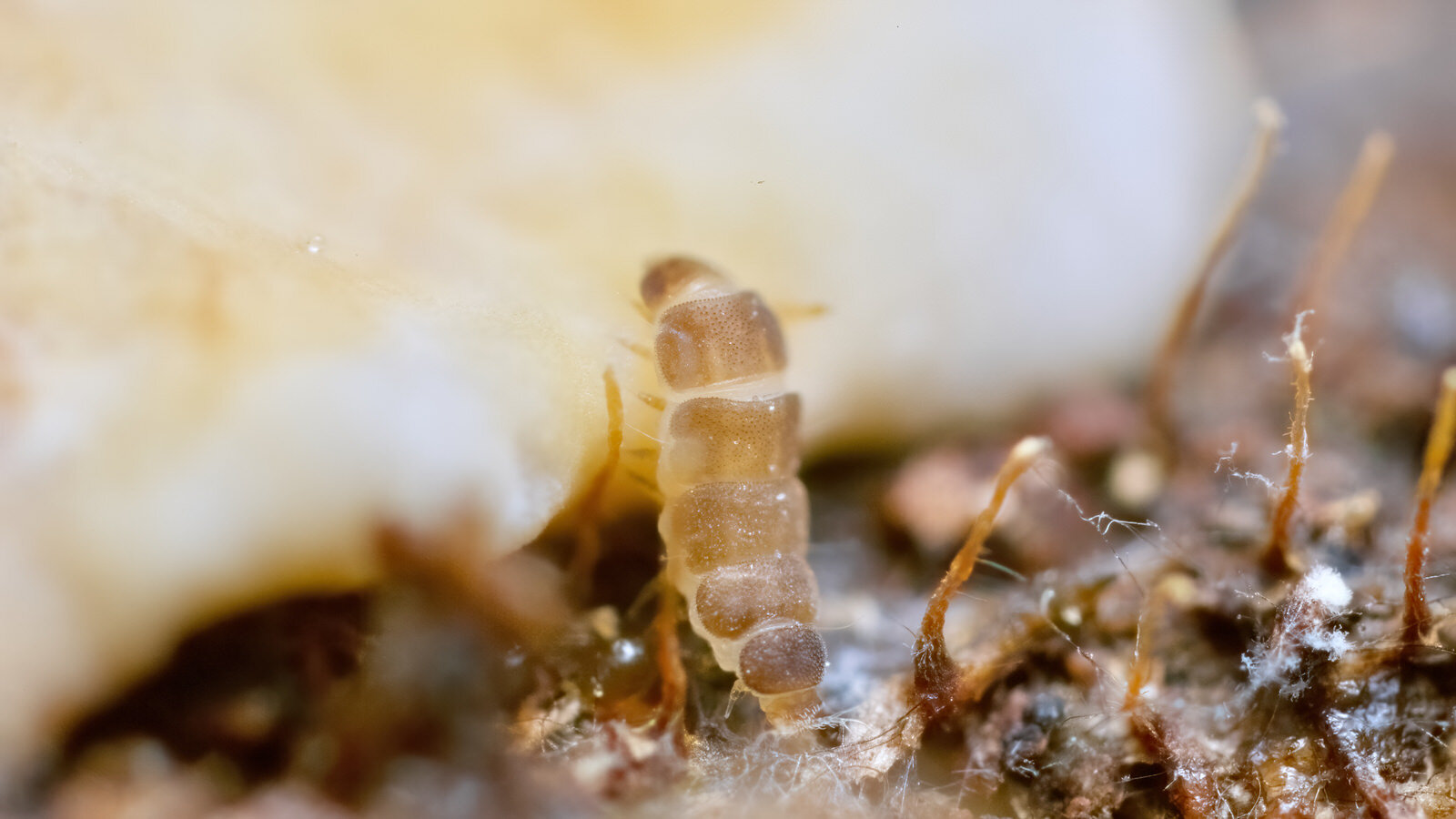
Antichtopauropodidae, pauropod, Binna Burra, Australia
Then there are these guys, from Binna Burra, Lamington National Park, Queensland, Australia, found eating a large mushroom in the 35 degree heat. When I found them, they scattered, running away as fast as they could. As an adult, the darkest coloured pauropod I've ever seen, almost purple brown under a magnifying glass. The sclerotised plates are so pronounced, it almost looks like the missing link between the Pauropoda and the Eurypauropodids....
Possibly Hansenauropodidae family, maybe Hansenauropus sp. pauropod, Kuranda, Australia
Continuing the sclerotised pauropod theme, The adult pauropod above, with a juvenile out of focus in the background are from Kuranda, in the wet tropics of Queensland, Australia.
Eurypauropods
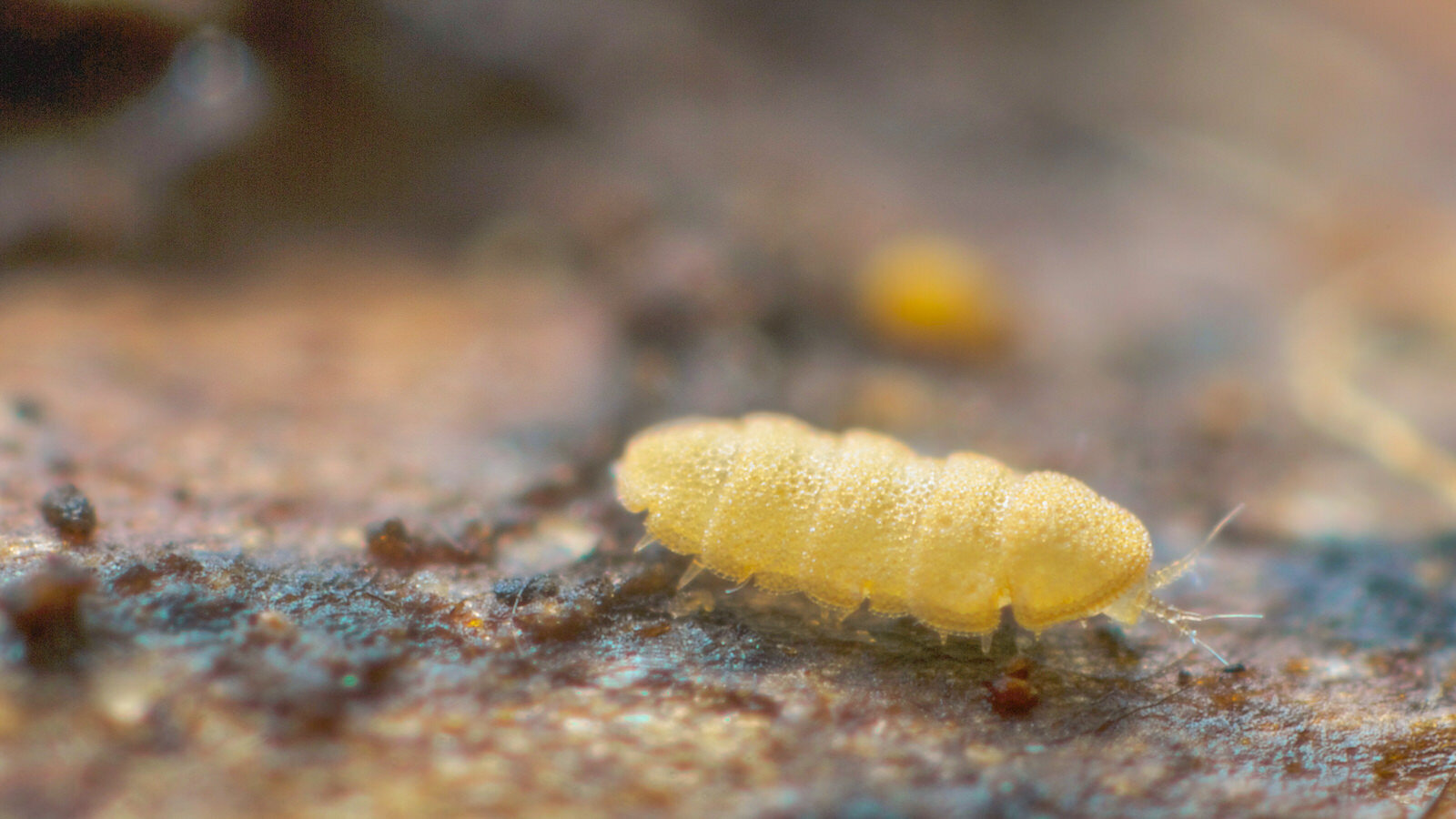
All about eurypauropods
The Eurypauropodidae were first named and described by John A Ryder in the October 1873 edition of The American Naturalist. This was only thirteen years after the first pauropod had been described by John Lubbock and designated its own class and order of Pauropoda. It makes fascinating reading. At that time, only three species of Pauropus had been described by Lubbock. Even now, 140 years later, Ryder's exuberance and ill-contained excitement is palpable as he gets to announce to the world that he has just discovered a fourth pauropod. And one completely unlike any seen before. Not just a new species and new genus, but a new family.
Eurypauropod, Koper, Slovenia April 2017
And they are even harder to find than usual. Not only are they under 1mm big, they're often the same colour as the soil. Their plates are fully sclerotised, where each of the fused pairs of tergites on an adult has 'hardened'. They tend to be a little slower and less manoeuvrable than other pauropods as a result. The photo below is a New Zealand species from the North Island. The patterning is very distinctive and strangely reminiscent of the Roger Burrows' Altair designs from the 1970s. As far as I know, there has been no research as of yet into the arrangement and function of the patterns present on all eurypauropods. It’s possible that they might even have meta-material properties, like the incredible cuticles of Collembola.
Eurypauropod close up, Thames, New Zealand Feb 2016
Eurypauropod, Cairns, Wet Tropics, Australia Jan 2016
Hansenauropus species probably H. gratus, Stewart Island NZ June 2014
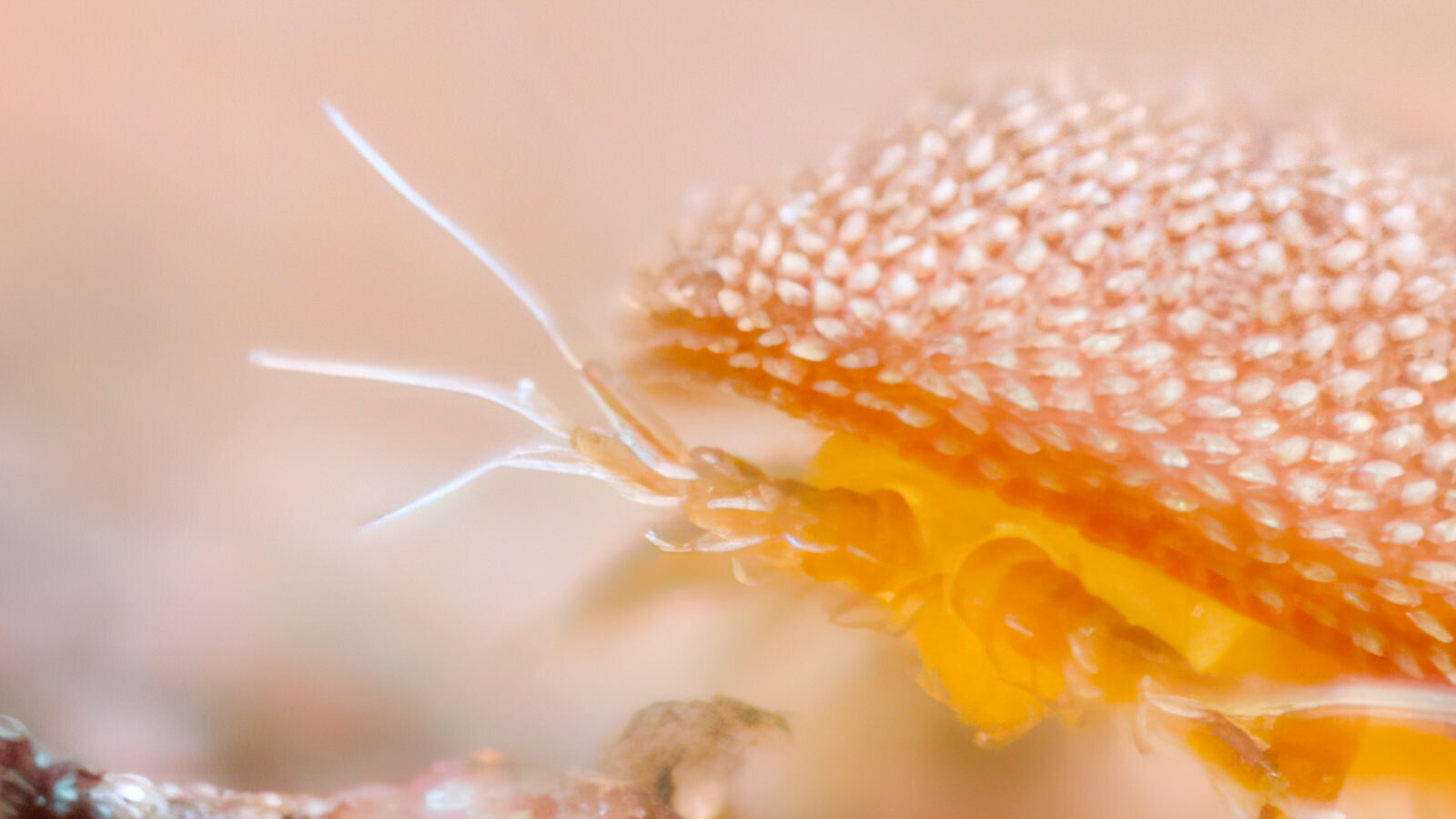
Adult eurypauropod, Trachypauropus britannicus and first instar
Trachypauropus britannicus was the first species of Pauropoda I ever saw and it took a while to track down what exactly it was. It's the UK's only eurypauropod, first described in 1982. As is almost always the case, soil fauna are less known and less understood than a lot of other, more accessible animals. As it is, we know very little about pauropods. It's certainly likely that they eat fungal hyphae and soft, rotting matter, though some have such poorly developed mouthparts that they are probably fluid feeders. For such an engaging little animal, it's a great shame they're not more popular amongst biologists.
Trachypauropus britannicus first instar under log, Butleigh woods, UK July 2020
Trachypauropus britannicus first instar, Butleigh woodlands, UK
Eurypauropod Trachypauropus britannicus under log, East Pennard, Somerset UK, Feb 2015











